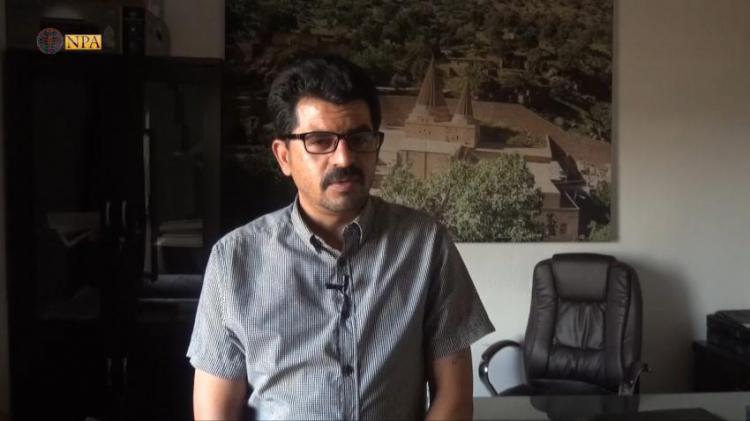On International Day of Victims of Terrorism, Fate of Thousands of Yazidis remains unknown
Qamishli – North-Press Agency
Ibrahim al-Ibrahimi
This year, the United Nations marks “the International Day of Commemoration of the Victims of Terrorism”, which occurs on August 21 each year, by a photo exhibition by the United Nations Office of Counter-Terrorism and the Friends of Terrorism Victims Group at the United Nations Headquarters in the city of New York.
The Yazidis in the area of Sinjar/Shangal in Iraqi Kurdistan Region are victims of “terrorism” due to the massacres which were committed by the terrorist Islamic State group (ISIS) against them.
The co-chair of the Yazidi House in al-Jazira region Ziad Abdal said that ISIS executed more than 1,700 Yazidis in the village of Kujo in Sinjar in Iraq and buried them in mass graves.”
In a special statement to North-Press, Abdal said: “Most of those who were killed, were young people, because they are the best in charting the future of the Yazidis. They were all students, professors, and many of them had scientific degrees”.
On August 15, 2014, the village of Kujo was massacred by ISIS when it invaded Sinjar, where hundreds of children and women were kidnapped and treated as slaves.
“The only victims who died in the Middle East as a result of the practiced policies and ideologies were the Yazidis, especially the Yazidis of Shangal and in particular the village of Kujo, where hundreds of mass graves in Kujo have been opened so far, yet hundreds are still missing,” Abdal added.
The co-chair of the Yazidi House in al-Jazira region called on the world on this day to call the massacre of Shangal as “genocide”, pointing out that “there are thousands of the victims including the dead, the missing and the kidnapped”, saying that what happened in the village of Kujo “has become a black point in the history of the world”.
It is noteworthy that ISIS launched an attack against the region of Sinjar/Shangal in August 2014, where the ISIS militants killed thousands of Yazidis, in addition to capturing Yazidi women and selling them in the markets of Mosul, Raqqa and other areas, while some people fled to Sinjar Mountain to take shelter, however, their stay without water and food led to the death of many of them.

